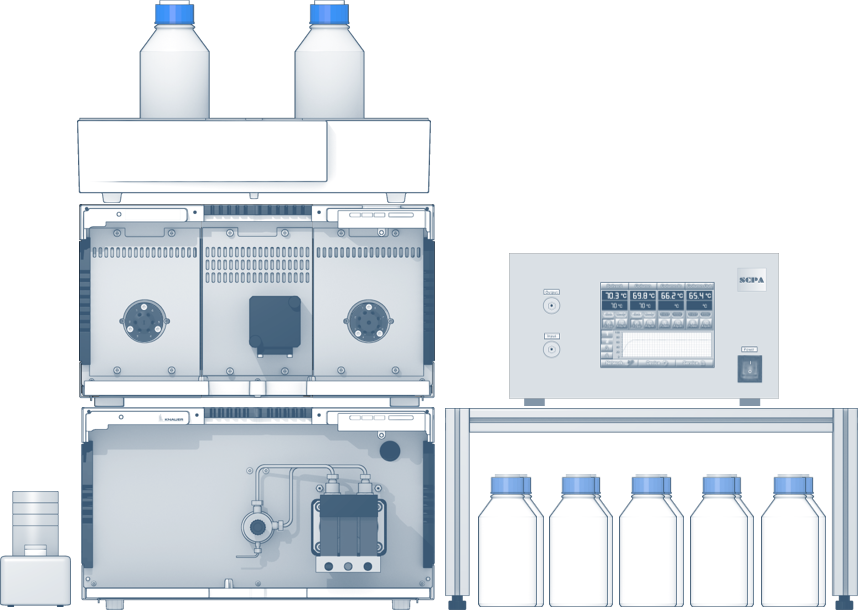The therapeutic potential of mRNA is extensively discussed in times of search for vaccines in the research of COVID-19. The idea is to provide the human body with mRNA, encoding therapeutic proteins, which the immune system uses to fight the virus.1
RNA can be produced and applied much easier compared to the full-length therapeutic proteins it is encoding for. In order to generate pure mRNA to administer, it was found that purification by chromatographic means is highly important.2
Key for RNA chromatography is the HPLC system layout. It is highly important that the chromatography is carried out at elevated temperatures in order to denature the RNA itself and hence simplify its structural diversity and yield a successful purification. Eleveated temperature in combination with a binary gradient between acetonitrile and water as done in the Reverse Phase Chromatography Method, will effectively seperate and also inactivate and unfold RNase.3,4
The dedicated RNA Purifier is an especially designed system for RNA purification. It consists of a ternary low pressure system pump, which not only gives you a reliable formation of binary gradient between water including 1.0 M TEAA (pH 7) and acetonitrile, but also allows the direct sample application of large volume sample onto the column by the system pump via its separate sample inlet port. The flow rate range of this pump lies between 10 to 80 ml/min. Sample Injection via a sample- or Variloop is possible with the integrated injection valve. After the injection valve solvent as well as sample will be heated by an eluent heater and then applied onto the column, which additionally is heated by a heating sleeve to ensure perfect thermal purification conditions. Product identification is realized by the variable single wavelength detector at 260 nm or the wavelength of your choosing. After purification fractionation is carried out by the fractionation valve.
Literature:
1. Schlake et al. Molecular Therapy, 2019, 27,4
2. Kariko et al. Nucleic Acids Research, 2011, 39 (21) e142
3. Gjerde et al. RNA purification and analysis 2009
4. Ketterer T. et al. U.S. Patent 8,383,340 B2.
